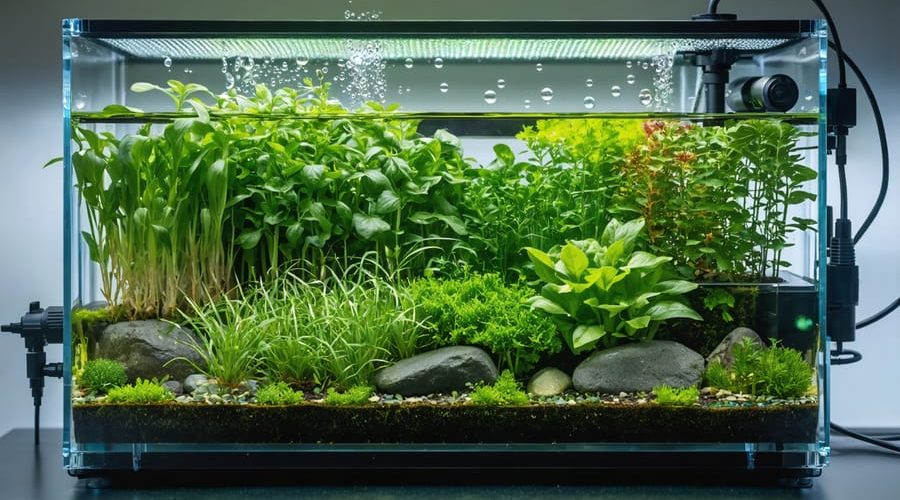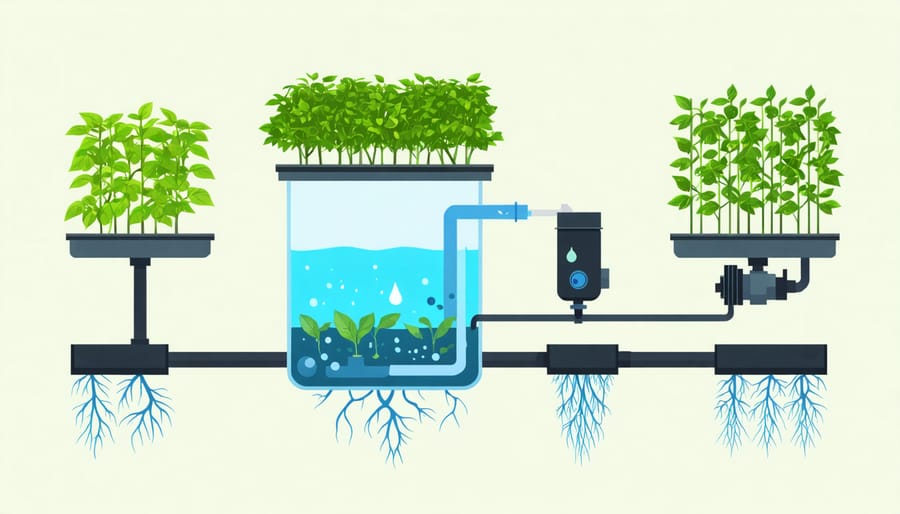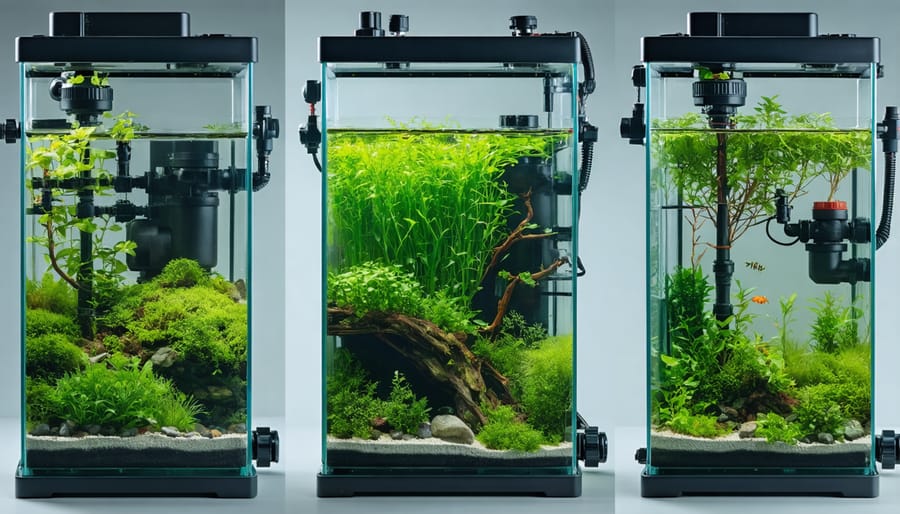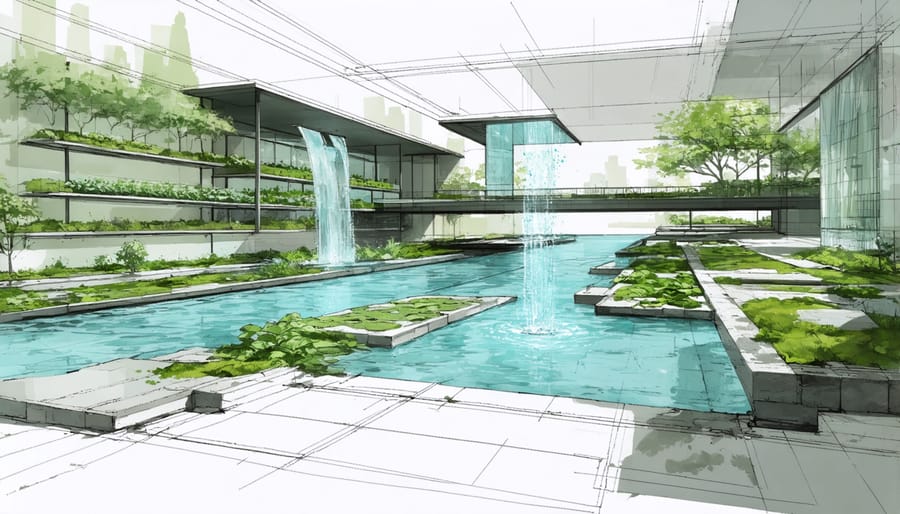
Transform Your Water Garden With This Simple Hydroponic System
Transform your water gardening journey with hydroponic water culture systems – a revolutionary method that grows plants directly in nutrient-rich water without soil. This innovative growing technique combines the best of traditional water gardening with modern agricultural science, offering faster growth rates, bigger yields, and incredible flexibility for both indoor and outdoor spaces.
Perfect for DIY enthusiasts and water garden lovers, hydroponic water culture systems create a dynamic environment where plant roots suspend directly in oxygen-rich water, accessing nutrients with unprecedented efficiency. Whether you’re looking to grow decorative plants, herbs, or vegetables, this method eliminates common soil-based challenges like pests, weeds, and uneven nutrient distribution.
Unlike traditional gardening, water culture systems give you complete control over your plants’ growing conditions, making it possible to cultivate a thriving garden year-round. The system’s simplicity – requiring just a container, air pump, nutrients, and growing medium – makes it an ideal starting point for beginners while offering enough complexity to satisfy experienced gardeners looking to expand their expertise.
Get ready to discover how this elegant fusion of water gardening and modern hydroponics can revolutionize your growing experience, whether you’re starting small with a desktop herb garden or planning a larger aquatic ecosystem.
How Water Culture Systems Work
Essential Components
To create a successful hydroponic water culture system, you’ll need several key components that work together with smart water technology to support healthy plant growth. The heart of the system is a reservoir or tank that holds the nutrient solution. This container should be light-proof to prevent algae growth and large enough to maintain stable water temperatures.
An air pump with air stones is essential for oxygenating the nutrient solution, ensuring your plants’ roots receive plenty of dissolved oxygen. You’ll also need net pots or growing cups to hold your plants and growing media. These containers should have plenty of holes to allow roots to access the nutrient solution while providing support for the plants.
A reliable growing medium, such as expanded clay pellets or rockwool, helps anchor plants and maintain moisture levels. Don’t forget about basic monitoring tools like a pH meter and EC/TDS meter to keep your nutrient solution balanced. For larger setups, consider adding a water pump and timer to automate nutrient circulation.

The Nutrient Solution
The success of your water culture system depends heavily on maintaining the right nutrient solution. Start with clean, dechlorinated water – you can achieve this by letting tap water sit for 24 hours or using a water conditioner. Your plants need a balanced blend of macro and micronutrients, which you can provide through pre-mixed hydroponic nutrients available at garden centers.
Monitor your solution’s pH level regularly, aiming to keep it between 5.5 and 6.5 for optimal nutrient absorption. A simple pH meter or test strips will help you track this. The nutrient concentration, measured in parts per million (ppm), should typically range from 500-1500 ppm, depending on your plants’ growth stage.
Change your nutrient solution completely every 1-2 weeks to prevent nutrient imbalances and salt buildup. Between changes, top up the reservoir with plain water as needed, since plants consume water faster than nutrients. Keep an eye on water temperature too – most plants thrive when the solution stays between 65-75°F. A simple aquarium thermometer works great for monitoring this.
Watch for signs of nutrient deficiencies in your plants, like yellowing leaves or stunted growth, and adjust your solution accordingly.
Setting Up Your First System
Planning and Layout
When planning your water culture system, start by choosing a location that receives adequate light and has easy access to electricity and water sources. A typical setup requires about 4-6 square feet of space for a basic system, though this can be scaled up or down based on your needs.
Consider the weight of your system when fully filled with water – most structures need to support at least 8-10 pounds per gallon of solution. Ensure your supporting surface is level and sturdy enough to handle this load.
Your layout should include space for the main reservoir, which typically needs 2-3 feet of horizontal space, plus additional room for maintenance access. Plan for air pumps and electrical connections to be elevated above water level to prevent any water damage.
Temperature control is crucial, so consider positioning your system away from direct sunlight if you live in a warm climate. Include space for monitoring equipment and a small work area for regular maintenance tasks. If you’re planning multiple growing units, leave enough space between them for easy access and proper air circulation.
Remember to account for plant height as they mature – most leafy greens need at least 12-18 inches of vertical clearance above the reservoir.

Assembly Steps
Let’s get started with building your water culture system! First, gather your materials: a reservoir container (minimum 5 gallons), net pots, air pump, air stone, airline tubing, growing medium, and a sturdy lid or cover.
Begin by drilling holes in your container lid to fit your net pots. Space them evenly, allowing enough room for plants to grow. Next, create a small hole for the airline tubing to pass through.
Connect your air stone to one end of the airline tubing, then connect the other end to your air pump. Place the air stone at the bottom of your reservoir – this will ensure optimal oxygen distribution throughout the water.
Fill your reservoir about ¾ full with water and add your nutrient solution according to the manufacturer’s instructions. Insert the net pots into the pre-drilled holes and fill them with your chosen growing medium (clay pellets work great).
Position your air pump higher than the water level to prevent back-siphoning. Plug in the pump and check that you’re getting consistent bubbles throughout the reservoir.
Finally, add your seedlings to the net pots, making sure their roots reach into the nutrient solution. Keep the water level consistent by topping up as needed, and monitor your plants daily for the first week as they adjust to their new environment.
That’s it! Your water culture system is ready to nurture your plants to healthy, vigorous growth.
Plant Selection
For beginners venturing into hydroponic water culture systems, starting with the right plants can make all the difference. Leafy greens like lettuce, spinach, and kale are excellent choices as they grow quickly and adapt well to water-based environments. Herbs such as basil, mint, and cilantro also thrive in these systems, offering fresh flavors for your kitchen.
When selecting plants, consider ideal plant combinations that have similar nutrient needs and growth rates. Start with just 2-3 plant varieties until you’re comfortable with the system’s maintenance requirements.
For successful growth, maintain water temperatures between 65-75°F (18-24°C) and ensure proper spacing between plants to prevent overcrowding. Choose healthy seedlings or start from seeds using starter cubes. Keep roots submerged but leave the stem and leaves above water level.
Remember that fast-growing plants like lettuce can be ready for harvest in just 4-6 weeks, making them perfect for building confidence in your hydroponic journey. As you gain experience, you can gradually expand to more challenging plants like tomatoes or strawberries.
Maintenance and Troubleshooting
Daily and Weekly Tasks
To keep your hydroponic water culture system thriving, establishing a consistent maintenance routine is essential. Similar to traditional water garden maintenance techniques, daily and weekly tasks ensure optimal plant growth and system health.
Daily Tasks:
Check water levels and top up as needed with pH-balanced water
Monitor water temperature (aim for 65-75°F)
Inspect plants for any signs of stress or nutrient deficiencies
Ensure air stones are functioning properly
Quick visual check of root health
Weekly Tasks:
Test and adjust pH levels (maintain between 5.5-6.5)
Check EC/PPM levels and adjust nutrient solution if needed
Clean any debris from net pots and growing sites
Inspect and clean air pump filters
Prune dead or yellowing leaves
Check for any algae growth and clean as necessary
Every two weeks, perform a partial water change (about 25%) to prevent nutrient imbalances. Monthly, thoroughly clean all system components, including net pots, air stones, and pump filters. Remember to keep a maintenance log to track changes and identify patterns in your system’s performance. This helps you develop a deeper understanding of your plants’ needs and optimize their growth conditions over time.
Common Issues and Solutions
While water culture systems are generally straightforward, you might encounter some common challenges along the way. Root rot is perhaps the most frequent issue, usually caused by insufficient oxygen levels in the water. To prevent this, ensure your air pump is working correctly and consider adding backup air stones.
Algae growth can also be problematic, especially when nutrient-rich water is exposed to light. Combat this by using opaque containers or covering your reservoir with light-blocking materials. Keep water temperatures between 65-75°F (18-24°C) to discourage algae proliferation.
Nutrient deficiencies might show up as yellowing leaves or stunted growth. Regular monitoring of pH levels (aim for 5.5-6.5) and maintaining proper nutrient concentrations through weekly testing can prevent most deficiency issues. Keep a log of your measurements to spot trends early.
Power outages pose a significant risk since your plants depend on constant aeration. Consider installing a battery backup system for your air pump, or keep air stones powered by battery-operated aquarium pumps as emergency backup.
Pest problems, while less common than in soil growing, can still occur. Inspect your plants regularly and maintain good air circulation to discourage insects. If you spot any issues, natural solutions like neem oil can be effective while keeping your system organic-friendly.
Cultural Integration Tips
Design Integration
Integrating a hydroponic water culture system into your existing space doesn’t mean sacrificing aesthetics. Consider creating a visually appealing setup by arranging plants at different heights, using transparent containers to showcase the root systems, and incorporating decorative elements like natural stones or bamboo supports.
For indoor spaces, establish a focal point by positioning taller plants like tomatoes or peppers at the back, with compact herbs and leafy greens in front. LED grow lights can double as ambient lighting, creating a warm, inviting atmosphere. Consider mounting floating shelves on walls to maximize vertical space while maintaining a clean, modern look.
In outdoor settings, blend your hydroponic system with traditional garden elements. Surround the setup with potted plants or create a living wall backdrop. Use natural materials like wood or stone for support structures, and consider adding a small water feature to complement the system’s flowing water sounds.
For a more discrete approach, cabinet-style setups can hide equipment while maintaining easy access. Paint your containers to match your décor, or wrap them in natural fiber materials. Remember to leave adequate space between plants for maintenance and harvesting, typically 6-12 inches depending on plant size.
Temperature control equipment and pumps can be concealed behind decorative screens or within purpose-built enclosures that complement your overall design theme.

Combining Traditional and Modern Methods
Blending traditional water gardening with modern hydroponics creates an innovative approach that maximizes the benefits of both methods. By incorporating hydroponic systems into existing water features, gardeners can enjoy enhanced plant growth while maintaining the natural beauty of their water gardens. This combination aligns perfectly with sustainable water gardening practices and offers exciting possibilities for creative garden design.
Start by installing floating rafts or net pots around the edges of your pond or water feature, where they can blend seamlessly with traditional marginal plants. These systems can be disguised using natural materials like bamboo or reed screens, maintaining the organic look while housing productive hydroponic growing spaces.
Consider creating dedicated zones within your water garden: one area for conventional aquatic plants and another for hydroponic systems. This separation allows you to maintain optimal conditions for both growing methods while creating an visually cohesive space. Use submersible pumps to circulate nutrient-rich water through both areas, benefiting all plants in your garden.
For smaller spaces, try incorporating vertical hydroponic towers that can serve as attractive focal points while maximizing growing space. These can be positioned near traditional water features, creating an interesting contrast between modern and natural elements. Remember to choose plants that complement each other and thrive in similar conditions, regardless of their growing method.
As we’ve explored throughout this article, hydroponics water culture systems offer an incredible array of benefits for both novice and experienced gardeners. From faster plant growth and higher yields to significant water conservation and reduced pest problems, these systems represent the future of sustainable gardening. The ability to grow plants year-round, regardless of outdoor conditions, makes it an invaluable solution for food security and hobby gardening alike.
Perhaps the most exciting aspect is how accessible these systems have become. With basic materials and a weekend of setup time, you can create your own thriving hydroponic garden. Whether you’re interested in growing fresh herbs for your kitchen, cultivating vibrant lettuce, or experimenting with larger vegetables, water culture systems provide the perfect foundation for success.
Don’t let the initial learning curve discourage you. Start small with a simple setup, and expand as your confidence grows. Remember that every experienced hydroponic gardener started exactly where you are now. The satisfaction of harvesting your first crop, grown entirely in water, is truly unmatched.
Ready to begin your hydroponic journey? Gather your supplies, choose your plants, and take that first step toward creating your own water culture system. The rewards of cleaner, healthier, and more sustainable growing practices await. Your future garden – and the planet – will thank you for it.
